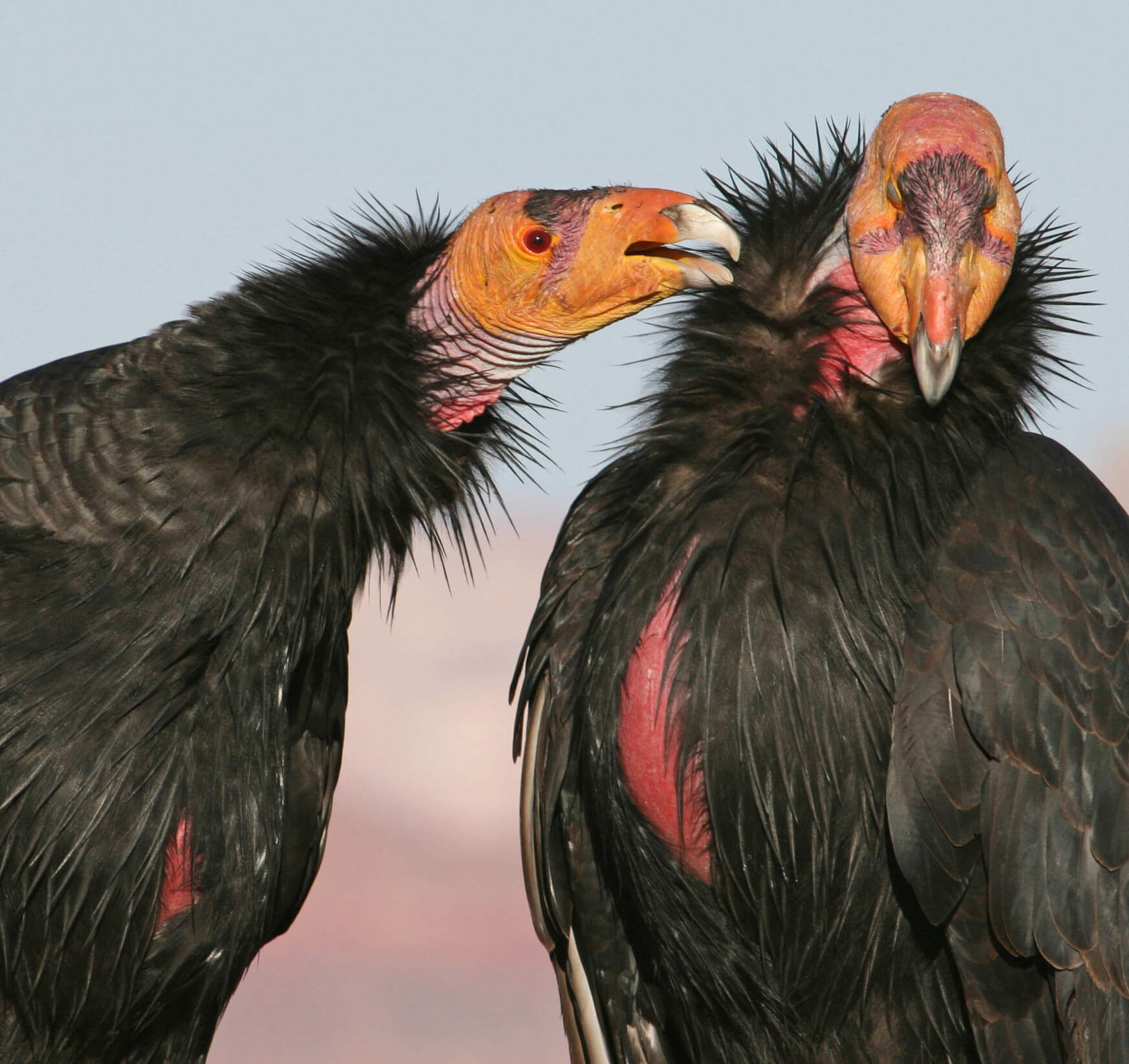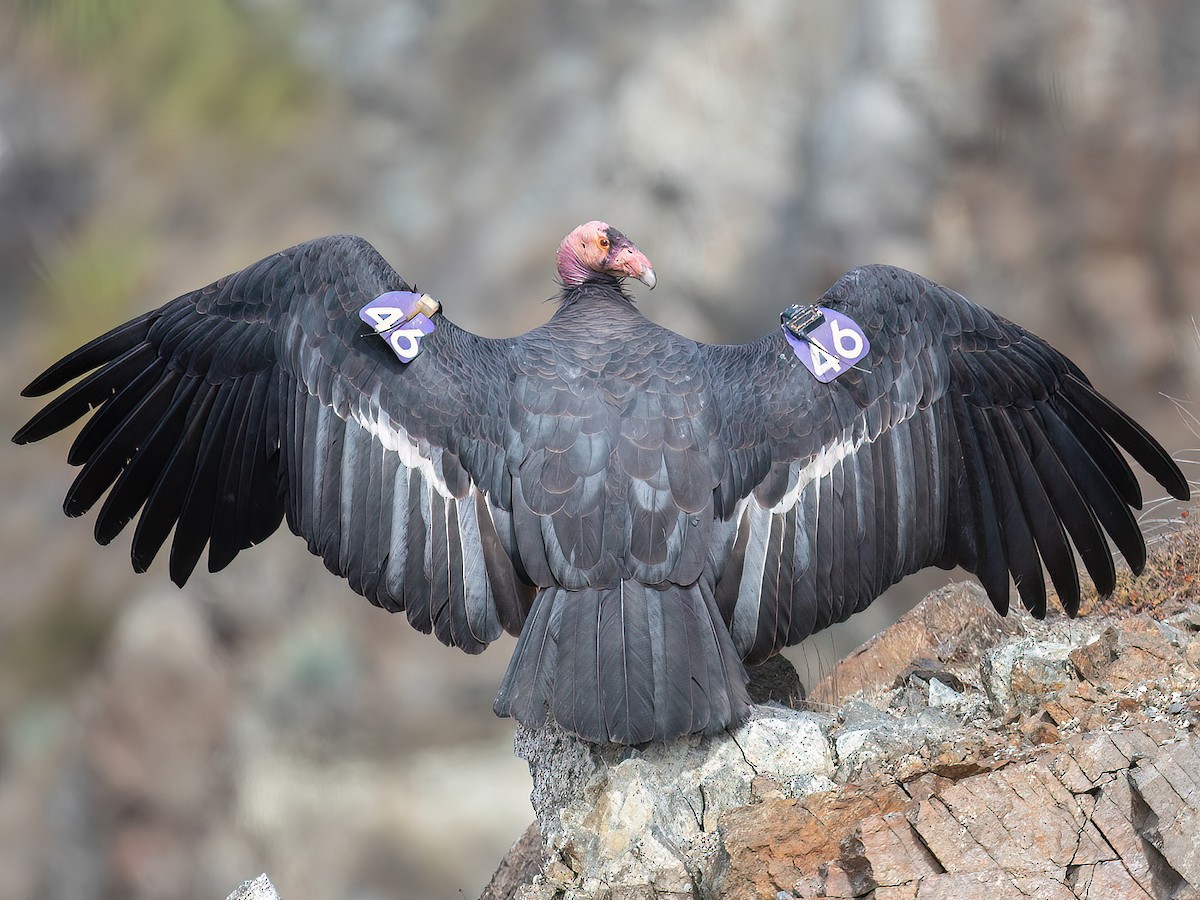
🦅 Biology & Ecology
1. Wingspan of the California Condor
- The California Condor (Gymnogyps californianus) has a wingspan of about 9.5 to 10 feet (2.9 to 3 meters).
- Comparison: This makes it the bird with the largest wingspan in North America, surpassing even the Bald Eagle (up to ~8 feet).
2. Preferred Habitat for Nesting and Roosting
- California Condors prefer remote, rocky terrain such as:
- Cliffs, caves, and large rock ledges for nesting.
- High elevations with good thermal currents to assist in soaring.
- Habitats include coastal mountains, deserts, and canyon country in states like California, Arizona, and Utah.
3. Primary Diet
- They are obligate scavengers, feeding almost exclusively on carrion (dead animals).
- Common food sources include:
- Deer, cattle, sheep, marine mammals (like whales or seals), and other large dead animals.
- They do not hunt live prey.
4. Lifespan
- In the wild: Typically 40 to 50 years.
- In captivity: Can live up to 60 years or more, thanks to medical care and protection from environmental hazards.
5. Reproduction and Offspring
- Reproductive cycle is very slow:
- They breed once every 1–2 years.
- Lay only one egg per nesting attempt.
- Both parents care for the chick, and if successful, will not breed again the following year.
- Chicks fledge after about 6 months but remain dependent for several more months.
🌍 Conservation
6. Causes of 20th Century Population Decline
- By 1982, only 22 individuals remained.
- Major causes:
- Lead poisoning (from ingested bullet fragments in carcasses).
- Habitat loss.
- Poaching and egg collection.
- Microtrash ingestion by chicks.
- Power line collisions.
7. Role of Lead Poisoning
- Lead poisoning is the leading cause of death for wild California Condors today.
- Occurs when condors feed on carcasses shot with lead-based ammunition.
- Causes neurological damage, organ failure, and eventually death.
8. Conservation Strategies
Key approaches include:
- Captive breeding programs (e.g., San Diego Zoo, Los Angeles Zoo).
- Reintroduction into wild habitats in California, Arizona, Utah, and Baja California.
- Tracking via GPS and wing tags.
- Health checks and lead chelation therapy.
- Public education and promotion of non-lead ammunition.
9. Success of Captive Breeding
- Extremely successful:
- From 22 individuals in 1982 to over 500 condors today.
- Over 300 are now in the wild.
- Captive breeding is ongoing and essential, especially as lead poisoning still limits natural reproduction success.
10. Current Challenges
- Lead exposure remains the most critical threat.
- Genetic diversity is limited due to the small original population.
- Dependency on human intervention, such as feeding stations and health checks.
- Trash ingestion (especially by chicks).
- Climate change and wildfire threats to nesting sites.
Certainly! Here are some notable images of the California Condor (Gymnogyps californianus):




1. California Condor Soaring Over the Big Sur Coast
This image captures the grandeur of a California Condor in flight over the rugged Big Sur coastline. The bird’s impressive wingspan is on full display. photocontest.smithsonianmag.com
2. California Condor Portrait
A close-up portrait of a California Condor, highlighting its distinctive bald head and striking facial skin coloration. fws.gov
3. California Condor in Flight
An adult California Condor soaring gracefully, showcasing its expansive wingspan and the characteristic white patches beneath its wings.
4. California Condor Chick
A young California Condor chick, offering a glimpse into the early stages of this species’ life.
5. California Condor at the Grand Canyon
A majestic California Condor perched near the Grand Canyon, emphasizing its size and the rugged terrain it inhabits.
For more images and information, you can visit the Cornell Lab of Ornithology’s photo gallery or explore the Flickr album by the U.S. Fish and Wildlife Service.
Let me know if you’d like more details or additional resources!
The California Condor (Gymnogyps californianus) is one of the most iconic and critically endangered bird species in North America. Here’s a detailed overview:
General Information
- Scientific Name: Gymnogyps californianus
- Common Name: California Condor
- Family: Cathartidae (New World vultures)
- Conservation Status: Critically Endangered (IUCN Red List)
- Range: Historically ranged across the western United States, Mexico, and Canada; now primarily in California, Arizona, and Baja California, Mexico.
Physical Description
- Size: One of the largest flying birds in North America.
- Wingspan: Approximately 2.5 to 3 meters (8.2 to 9.8 feet).
- Weight: Around 7 to 14 kilograms (15 to 31 pounds).
- Appearance: Mostly black plumage with distinctive white patches under the wings visible in flight. The head is mostly bald and varies in color from orange to reddish-pink depending on the bird’s mood and breeding status.
Behavior and Ecology
- Diet: Scavenger — feeds on large dead animals (carrion) such as deer, cattle, and marine mammals.
- Flight: Soars for hours on thermal updrafts with minimal wing flapping, conserving energy.
- Reproduction: Very slow breeder; lays one egg every 1-2 years. Nests on cliff ledges or large trees.
- Lifespan: Can live up to 60 years in the wild.
Conservation History
- The California Condor population declined dramatically in the 20th century due to:
- Lead poisoning from ingesting spent lead ammunition.
- Habitat destruction.
- DDT pesticide effects.
- Microtrash ingestion (small bits of trash that nestlings ingest).
- By 1987, only 27 individuals remained in the wild.
- The species was brought into a captive breeding program to save it from extinction.
- Thanks to extensive conservation efforts, the population has increased to over 500 individuals, with more than half living in the wild as of the latest data.
Interesting Facts
- California Condors are considered a symbol of wildlife conservation success.
- They have one of the largest wingspans of any North American bird.
- They play an important ecological role as scavengers by cleaning up carcasses and preventing disease spread.